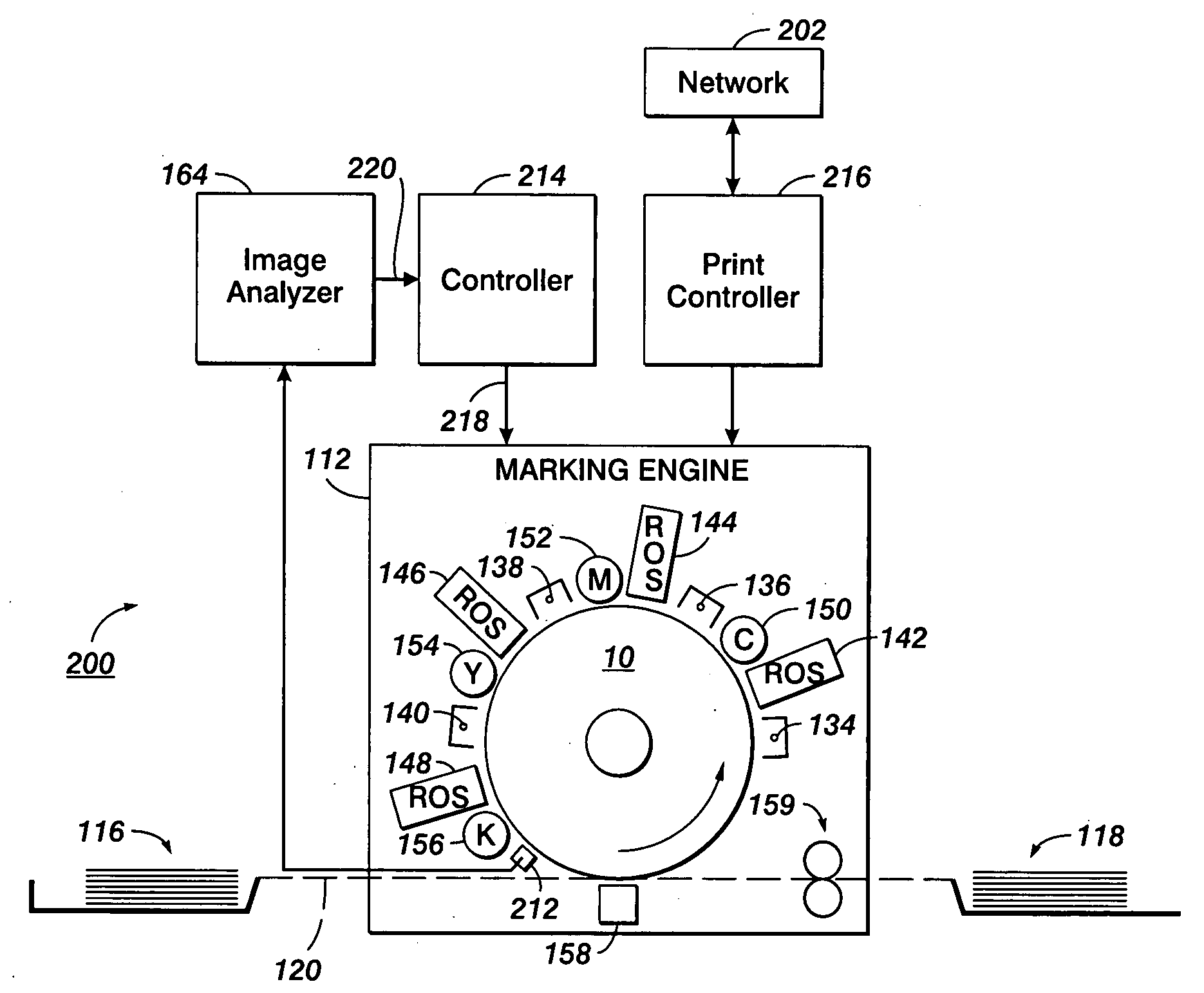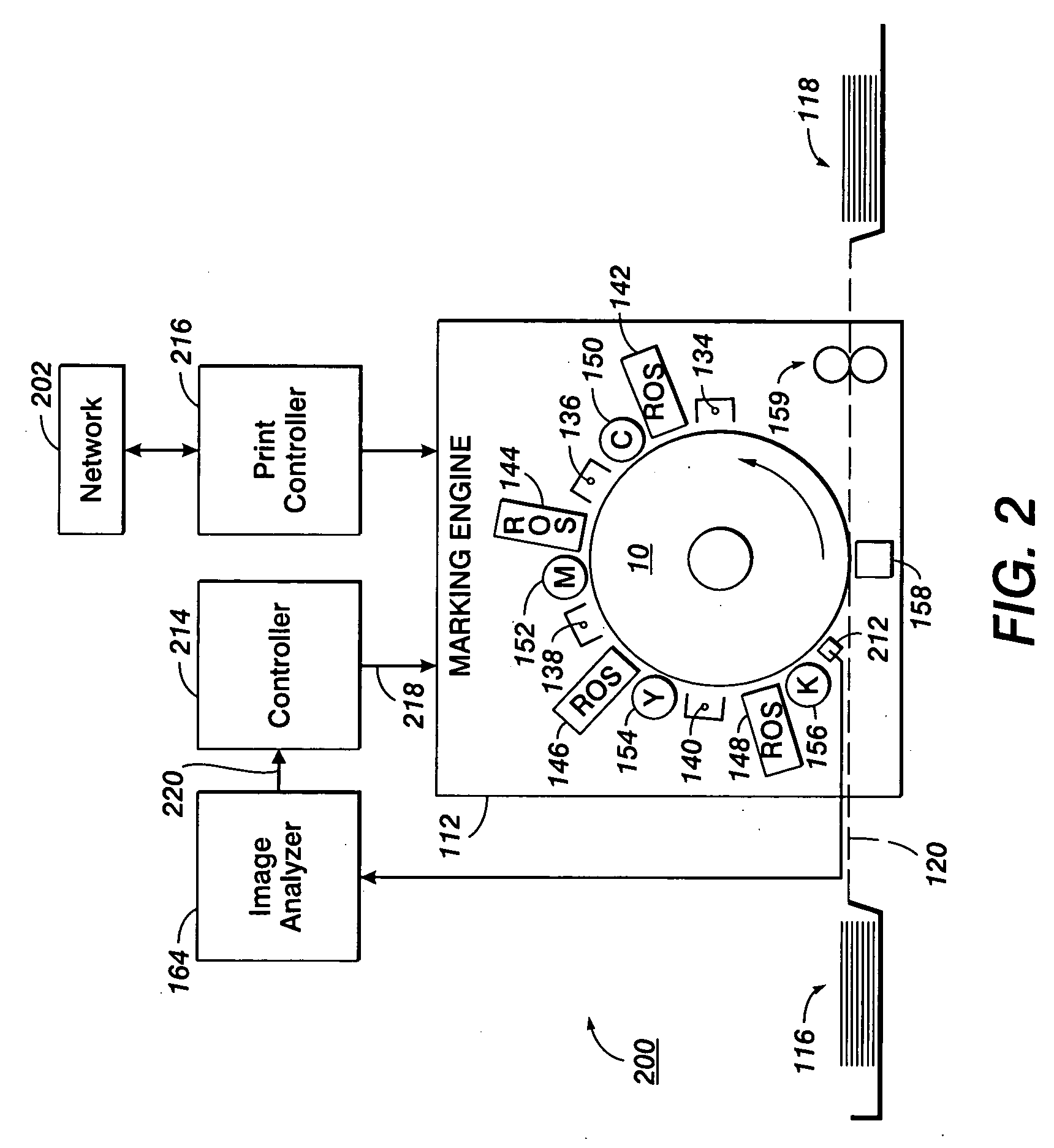Printer control system to minimize two-dimensional image quality defects
a control system and two-dimensional image technology, applied in the direction of instruments, electrographic process equipment, optics, etc., can solve the problems of donor rolls not being able to accumulate a sufficient level of toner to properly develop current images, two-dimensional image quality non-uniformities affecting the performance of image printing systems, etc., to achieve the effect of minimizing two-dimensional image quality non-uniformities
- Summary
- Abstract
- Description
- Claims
- Application Information
AI Technical Summary
Benefits of technology
Problems solved by technology
Method used
Image
Examples
Embodiment Construction
[0029]U.S. Pat. No. 6,842,590, 7,013,094, and 7,313,337; and U.S. Patent Application Publication No. 2006 / 0109487; 2007 / 0003109; and 2007 / 0201097, herein incorporated by reference, are examples of prior art approaches.
[0030]The present disclosure proposes an image printing system that scans (e.g., using a linear array sensor (e.g., a fall width array (FWA))) a toner image on an image bearing surface and then subsequently minimizes toner development system related two-dimensional image quality non-uniformities through closed loop control of appropriate toner development system parameters. For example, as discussed above, different forms of two-dimensional image quality non-uniformities that can be detected and minimized are noise mid-frequency (mottle), graininess and reload. However, it is contemplated that the present disclosure is not limited to these forms of two-dimensional image quality non-uniformities but may be extended to any other form of two-dimensional image quality non-...
PUM
 Login to View More
Login to View More Abstract
Description
Claims
Application Information
 Login to View More
Login to View More - R&D
- Intellectual Property
- Life Sciences
- Materials
- Tech Scout
- Unparalleled Data Quality
- Higher Quality Content
- 60% Fewer Hallucinations
Browse by: Latest US Patents, China's latest patents, Technical Efficacy Thesaurus, Application Domain, Technology Topic, Popular Technical Reports.
© 2025 PatSnap. All rights reserved.Legal|Privacy policy|Modern Slavery Act Transparency Statement|Sitemap|About US| Contact US: help@patsnap.com



